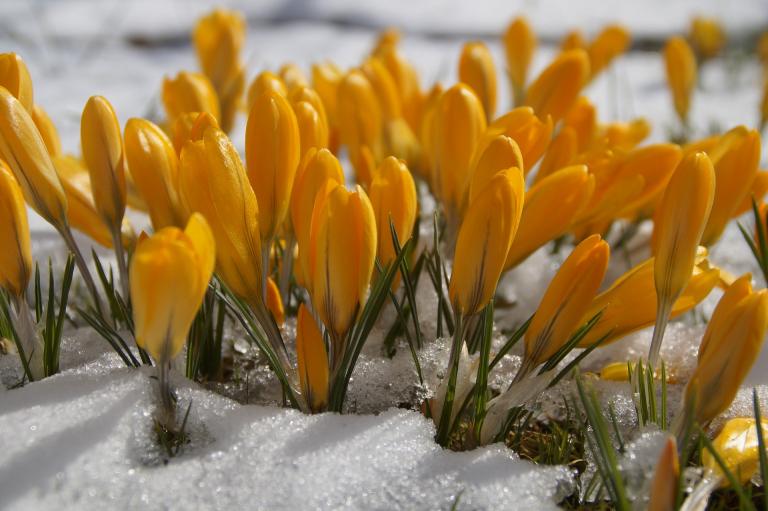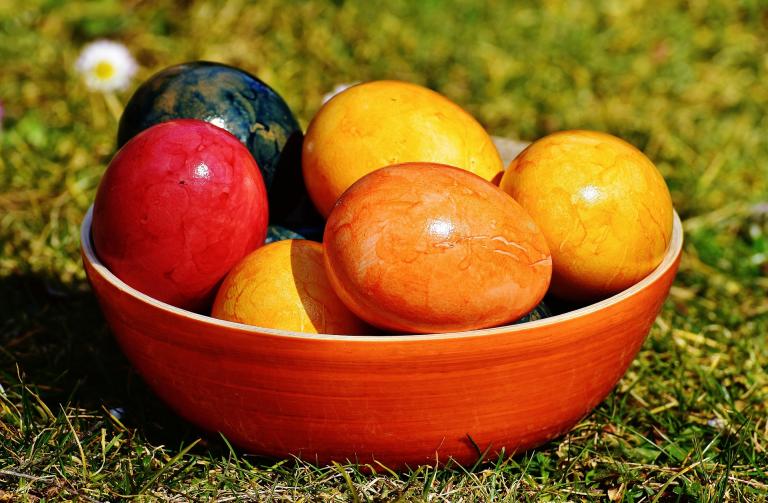Over the last week, Michigan has been transformed into the Ice Planet Hoth. Temperatures have been hovering in the low teens and inches of fluffy white snow have filled our lawns, sidewalks, and highways.
In spite of the weather, Spring is just around the corner with the Vernal Equinox a few weeks away. A seasonal celebration that brings hope and renewal to those who observe it, especially for people in the colder climes.

Spring brings great joy to me. I love watching the trees “green up” with new leaves. It is a delight when flowers such as Crocus and Tulip poke their tendrils up through still icy ground, bringing color into an otherwise gray world.
For Northern Hemisphere Wiccans and Pagans, the Spring Equinox signals the Wheel of the Year turning to Ostara. And as a Witch, I find celebrating the Vernal Equinox or Ostara is a wonderful release of Winter’s Hermit Energy. And what better way is there to get into a Spring holiday mood then to decorate some eggs?

Ostara: Why Decorate Eggs For Spring?
Coloring eggs in beautiful shades of green, yellow, red, and blue in celebration of Spring takes me back to fond memories of childhood decorating Easter eggs with my siblings. When I was a child, our local schools were closed on “Good Friday” (remembrance of the crucifixion of Jesus). My mother would hard-boil two cartons of eggs. Then, my siblings and I would spend the morning coloring those eggs in preparation for Easter supper on Sunday.
Growing up, I never understood how this activity could be part of a religious celebration for a man from the ancient Middle East. But as an adult, I’ve learned that cultures around the world have celebrated the concepts of fertility, renewal, and rejuvenation at Spring for thousands of years with decorated or colored eggs as a common theme.

For instance, the Iranian New year, Nowruz (also known as New Day or the Persian New Year) falls on the Spring Equinox and decorated eggs are part of their celebration. Ukrainians have a tradition of decorated eggs known as “pysanka” (utilizing wax to create intricate shapes before the egg is colored) which might date back to the worship of Dazhboh from pre-Christian times. Ancient Germanic cultures could have included colored eggs in their Spring celebrations as well.
As I think on it now, it’s not all that strange ancient Christians brought their customs and celebrations into the new religion. People tend to stick with what they know. Decorating an egg as a symbol of Christian resurrection or new life? Sure. Why not when the egg already holds that meaning?

Ostara: Eostre and the Egg
Modern Wiccan and Pagan tradition connects a Germanic/English goddess known as Eostre with decorated eggs and rabbits in connection to Spring. Eostre’s name is said to be the origin of the word “Easter” in connection to the Christian holiday. However, there is little to no evidence of this goddess beyond the work of a monk known as the Venerable Bede. Even so, unverified personal gnosis has given life to Eostre’s mythology as a fertility or Dawn goddess, connecting her to the annual celebration of Spring including the known symbology of decorated eggs, bunnies, flowers, etc.
A modern story of Eostre and her connection to eggs and rabbits goes something like this:
One day, as the goddess Eostre walked through a forest she came across an injured bird. Seeing the bird so near to death grieved the goddess’ heart, so she decided to save the bird. Eostre transformed the injured bird into a healthy young rabbit. When the bird awoke she found herself healed and changed from her former state but not through a complete transformation. The former bird discovered that even as a rabbit she could lay eggs. Happy to have another chance at life, the rabbit decorated the eggs she lay and gave them to Eostre as an offering of thanks.

Regardless of the origin of decorated eggs for Spring celebrations, the activity is one that can bring joy and life into a household. Whether done with family, a group of children or a gathering of friends decorating eggs for Ostara is a way to reconnect with each other and await the awakening of the land to Spring.
For those who prefer not to use animal byproducts such as chicken eggs, one can use paper mache, plastic, wood, or other types of materials to create beautiful eggs as part of a Spring or Ostara celebration.
While you may not be able to use the decorating method listed below if using an alternate egg-shaped material, there are many decorating options including paint, markers, wax crayons, glue to affix beads, seeds, etc. Let your imagination run wild!
Decorating Eggs with Natural Dyes
(Adapted from Berry Chatty at Fruit Bouquets)
Red beets = Pink to red
Red onion skins = Pale purple to red
Red cabbage = Blue
Spinach = Green
Cherries and strawberries = Deep red
Purple grape juice (use as is) = Lavender
Raspberries or blackberries = Pink/purple
Blueberries = Blue
Yellow or green apple peels = Yellow/green
Carrots = Yellow/orange
Natural dyes will take longer to work than store-bought kits (think PAAS with the tablets and vinegar/water. These are synthetic dyes so they work faster). Leave the eggs to soak overnight for better color.
Making Natural Dyes
Step 1: Chop or mash your fruits and veggies until you have enough to fill about 4 cups.
Step 2: Boil them in 4 cups of water and 2 tablespoons of white vinegar.
Step 3: Leave it to simmer for about 30 minutes and strain out any leftover fruit or vegetable bits.
Step 4: Place each color in a separate bowl and leave hard-boiled or hollowed-out eggs to soak overnight.

















